How to Drive Business Growth through Clever Upsell Programs


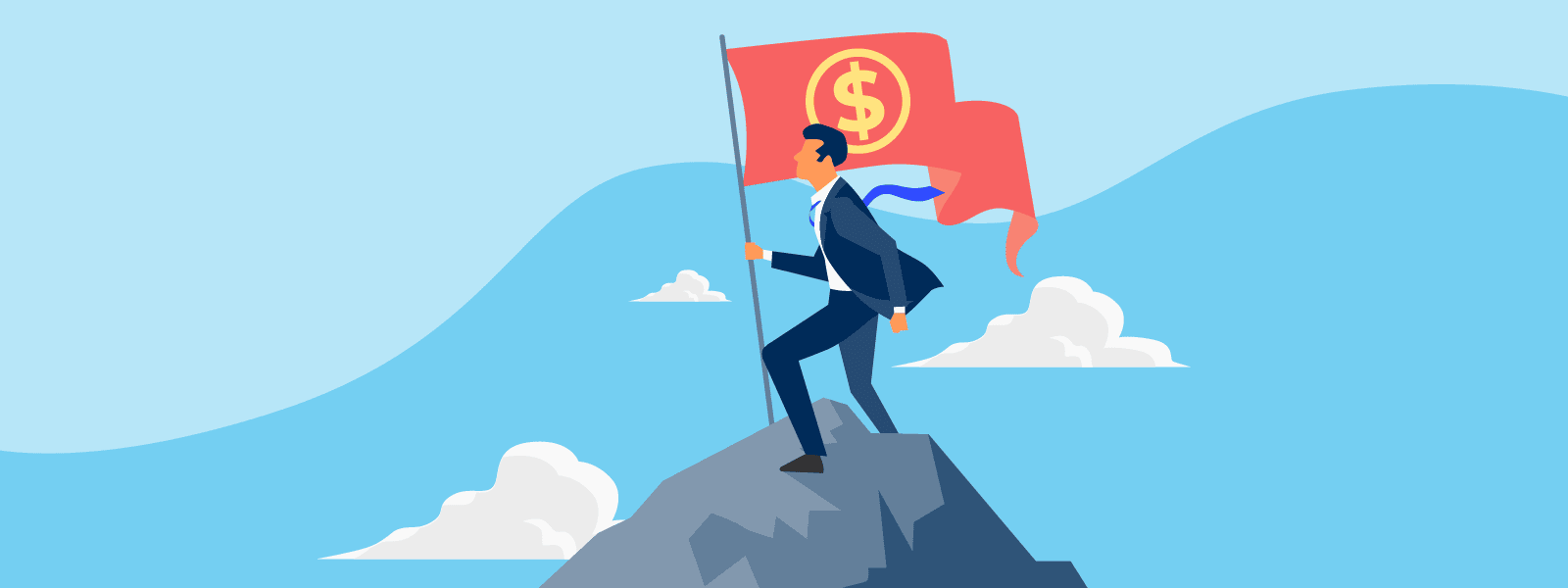
As a business owner, your most important goal is to run a thriving and profitable company. This can only be achieved by increasing your sales, improving customer experience, and boosting customer loyalty.
After having invested money and time in your business, you definitely want to see a return on your investment. Therefore, you will always be on the lookout for new ways to make clients buy from you.
The process of customer retention, however, begins with good customer experiences. There are no shortcuts, unfortunately.
It is, therefore, important to retain or re-engage existing customers. Remember that the probability of completing a sale with an existing customer is 60-70 percent while that of selling to a new prospect is 5-20 percent.
When you finally get a customer, you want them to stay on for as long as you are in business, right? Then there is one important thing you need to start doing. Upselling.
Upselling is an effective way to convince clients to keep coming back for more. Upselling lets you inform your clients about complementary or value-adding products and services that your company also offers. This way, you give them a compelling reason to make more purchases, even if they did not intend on doing it in the first place.
Upselling helps you create repeat customers and saves you the money you could have spent looking for new customers. You will also save on resources since there will no longer be a need to attract new leads continuously.
This article looks at how you can incorporate upselling as part of your sales strategy and how you can use it to drive business growth.
Why Upsell?
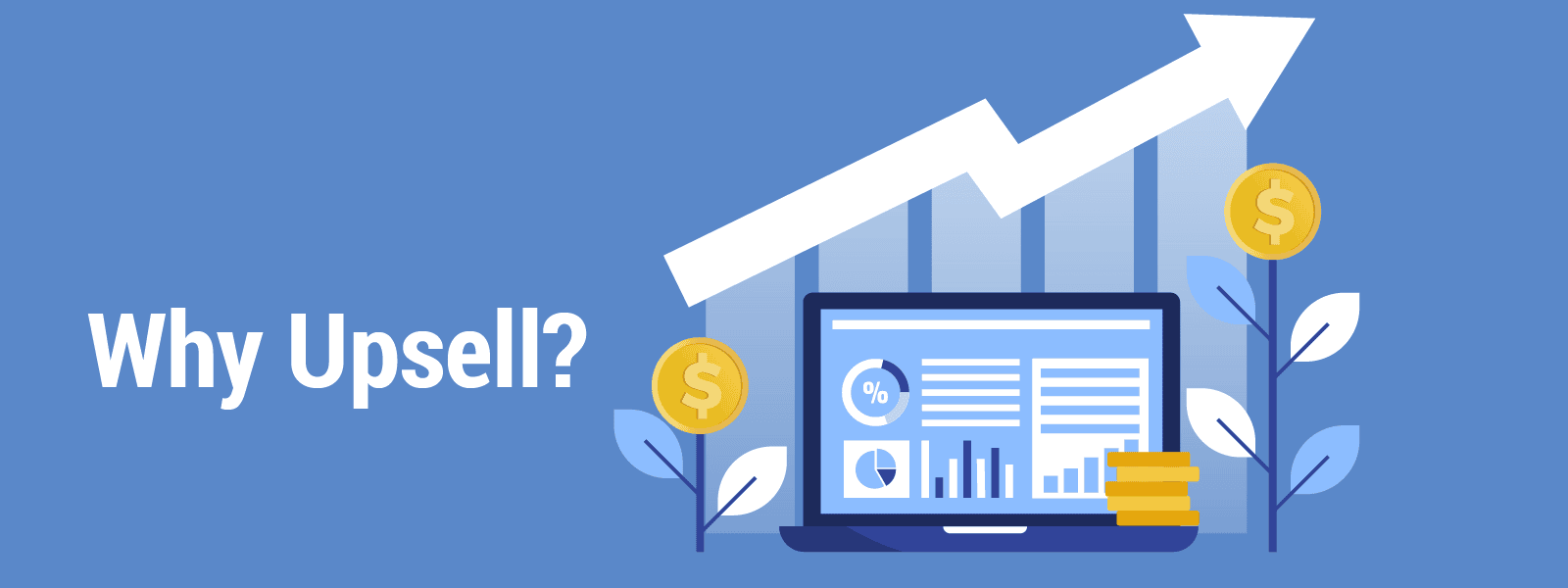
Imagine this: you are a hotel owner. A customer makes a reservation for a regular room at $450. When they arrive, you offer to upgrade them to an unreserved executive suite, which is priced at say $1,200.
This is an opportunity to upsell. Go ahead and even sweeten the offer by providing the room at a discounted rate of $1,000 a night. If the guest accepts the proposal (chances are they will), they get a better room while you make an additional revenue of $550 per night depending on the duration of their stay.
Upselling generally convinces customers to make a larger purchase or buy an additional item. It offers a customer already interested in the product the opportunity to spend a bit more and get a bit more in return, which leads to more business for you.
Upselling also provides you with an opportunity to encourage the customer to opt for a premium version of the same product. It is different from cross-selling since cross-selling involves getting the customer to purchase an additional separate product.
Upselling has numerous benefits for both the customer and your business. The customer receives a service that solves more of their problems while the company increases sales, boosts profits, and gains a loyal customer.
Driving Business Goals through Upsell Programs
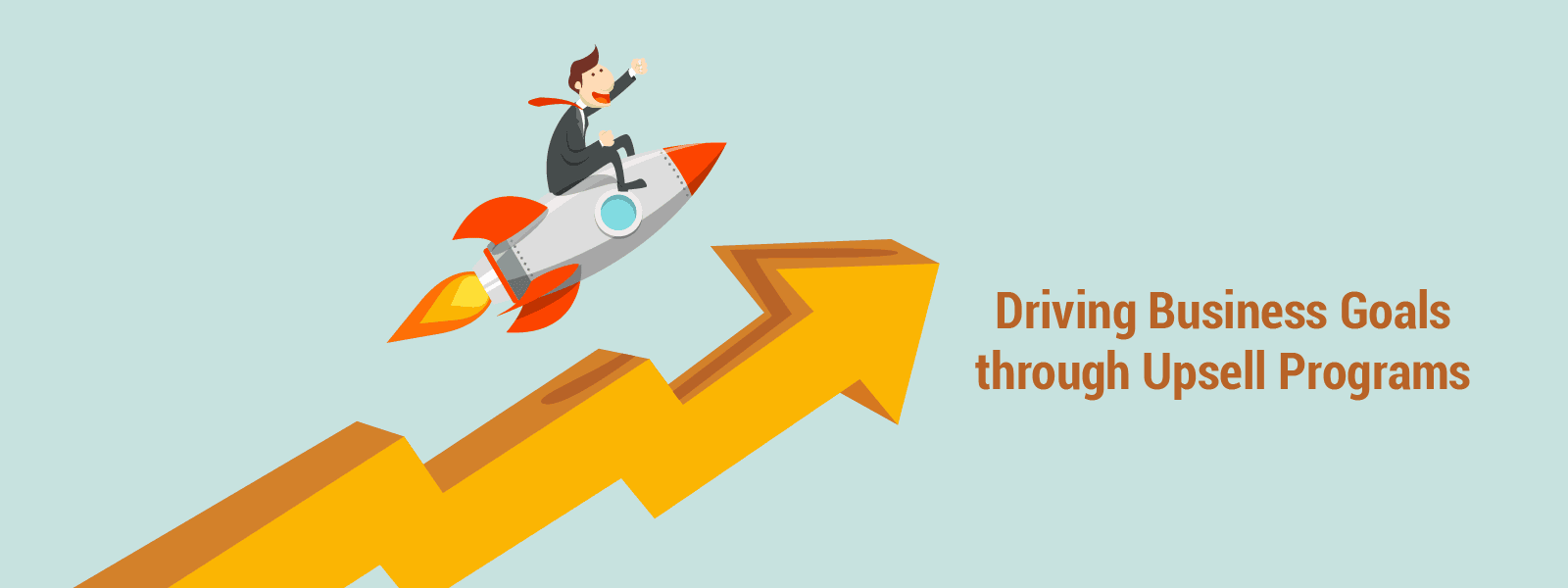
If you draw your marketing strategy from consumer’s psychology, then you will win at the upsell strategy. Consider this, according to The Paradox of Choice, choice does not free us. It paralyzes us, leaving us dissatisfied and unhappy. When you present people with multiple decisions, it can result in no choice at all.

Image Source: Accenture
However, consumers today are not sitting and waiting for you to provide them with a myriad of options. They have become informed buyers.
Seventy-nine percent of buyers will research before purchasing in-store, while85 percent will conduct thorough research before buying online. Their preferred sources of information are websites, email, and of course, social media.
Consumers conduct searches not only to get more information on the product but to ensure that they make the best choice. In order to attain this, they dig up and soak up a lot of information from many different sources they can lay their hands on.
Their search can be more or less extensive depending on the value of the product or service. They don’t mind reading review after review until they get a clearer picture of their intended purchase. They will look for recommendations, and so much more.
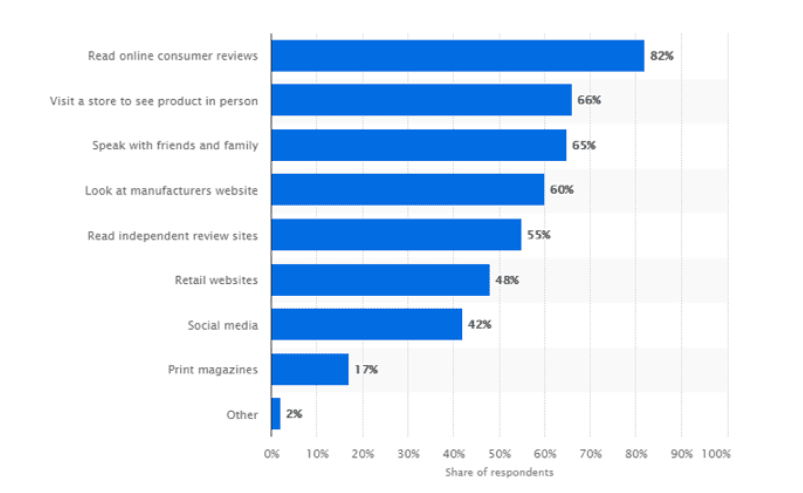
Image Source: StatistaImage Source: Statista
So, by the time they visit your shop or online store, they have probably already made up their mind on what product or service to buy.
However, in a study aimed at predicting customer behavior during purchase, displaying slightly higher price product options than those your customer intended to buy can drive an average of more than four percent sales increase.
This means that, out of all the consumers intending to buy a product on your website after research, a small percentage of them will be willing to switch to a more expensive option, a decision that can be profitable for you.
Let’s say you sell cameras. A customer visits your website to order camera #1 because they liked its specs and features. Research helped them eliminate other camera options before they got to your page.
When examining camera #1, which they believe is the right one to buy, they see camera #2, which has better features, better ratings, good reviews, and a couple more testimonials than camera #1. Camera#2 cost a few more bucks, but they are now willing to dig deeper into their pocket, which at this point is not an issue. They have to buy it!
According to research, emotions play an important role in purchase behavior. Humans are not as logical as we think, and this can help drive sales. It is about targeting consumer feelings.
Target those feelings of status, self-worth, and acceptance. Offer exciting offers, including adventure, glory, relationships, and love. Focus on the product features, but also sell the lifestyle and feelings.
Highlight the emotional response a product will help the consumer achieve. In other words: don’t sell products, sell experiences.
Online reviews impact the buying decisions of 93 percent of consumers. They also take star ratings into consideration, with 3.3 being the minimum rating they would consider engaging. Ninety-one percent of consumers consider online reviews personal recommendations.
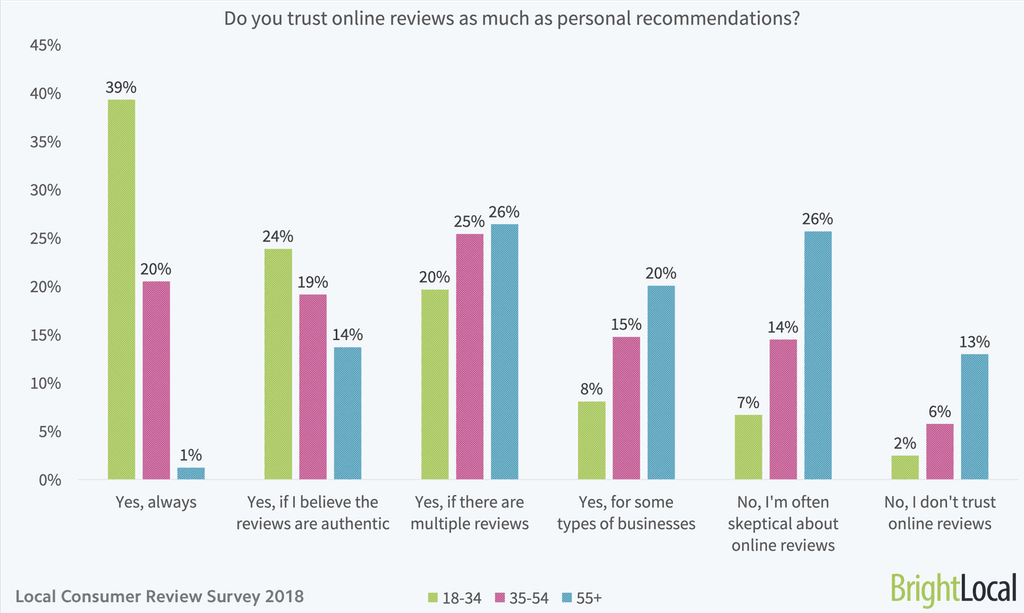
Image Source: BrightLocal
So, if the cost is not the most important factor during purchase for the consumer, imagine how using psychology and having good reviews would help.
Even though a high percentage of customers will buy the product they originally intended to buy, you still get a few more dollars from selling an upgraded version of the product to those willing to switch.
Also, remember that personalized recommendations drive profits. Having a detailed personalized recommendation based on a customer’s previous touchpoints with your brand increases average order value.
The more personalized your recommendations are, the more your business benefits from larger purchases. Personalized recommendations account for 31 percent of eCommerce revenues. They also significantly increase conversion rates (CR).
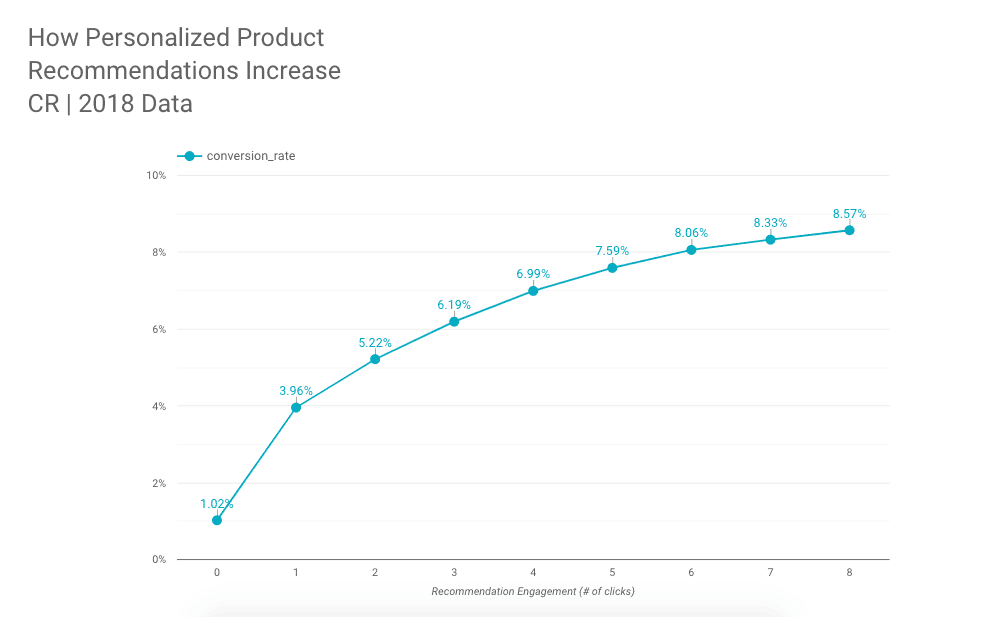
Image Source: Barilliance
Putting the right offer in front of customers becomes an incredible sales tactic, and if you are not upselling, then you are missing out. Examples of upselling include: encouraging the customer to buy a more expensive product, upgrade to a product with better or more features, provide training on usage, or offering an extended warranty.
Benefits of Upselling
13 Clever Upsell Programs that Will Benefit You and Your Customer
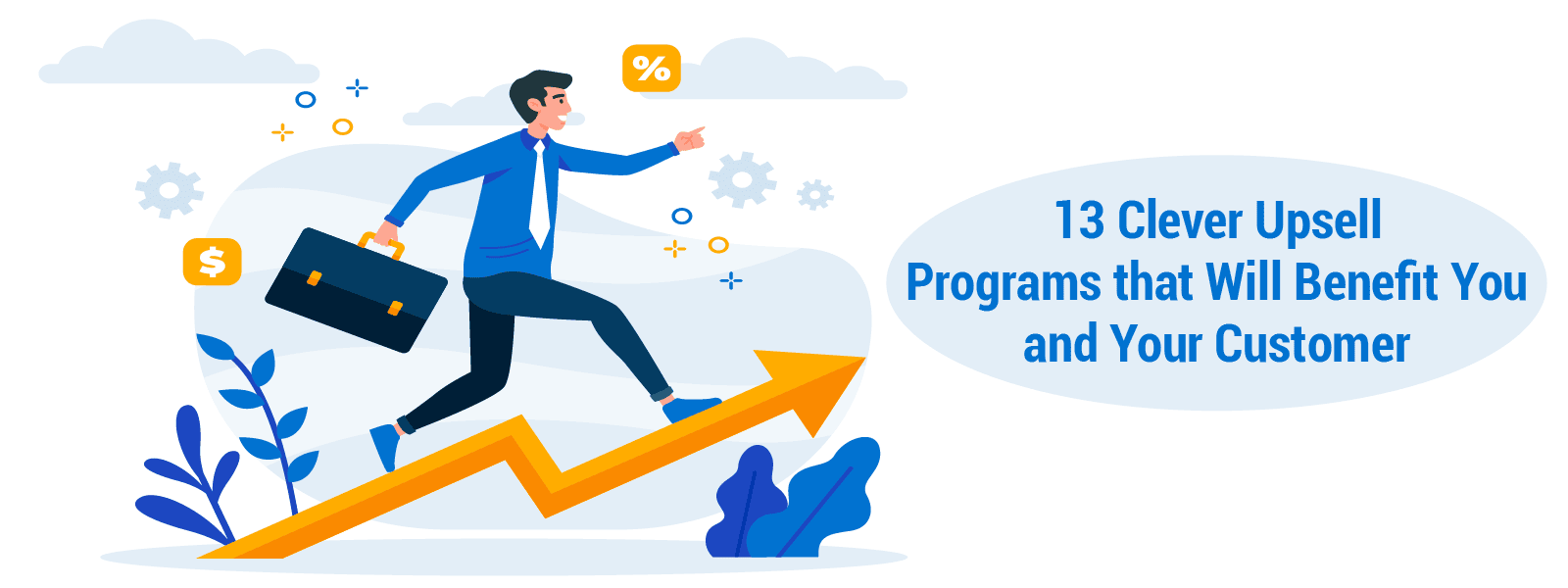
The choice of an upsell technique will greatly depend on your customers and the type of business you are in. Any upsell attempt should provide value and clear benefits to the consumer. Ensure your focus is on the customer experience and the problems your products can help them solve.
The following are upselling strategies that will mutually benefit both your customer and your business if implemented.
1. Align the upsell to the customer’s goals and needs
Customers are unique and should not be bundled up in one category. You need to understand each customer and identify their distinctive needs. These are:
Ninety-one percent of consumers will shop with brands that they remember, recognize, and provide relevant recommendations and offers. Eighty-three percent of them are also willing to share their data in order to receive a personalized experience.
Accenture recommends the 4Rs of personalization to curate customer experiences successfully to each across all channels. It is considering all customer interactions with the brand, including shopping, marketing, and service experiences.
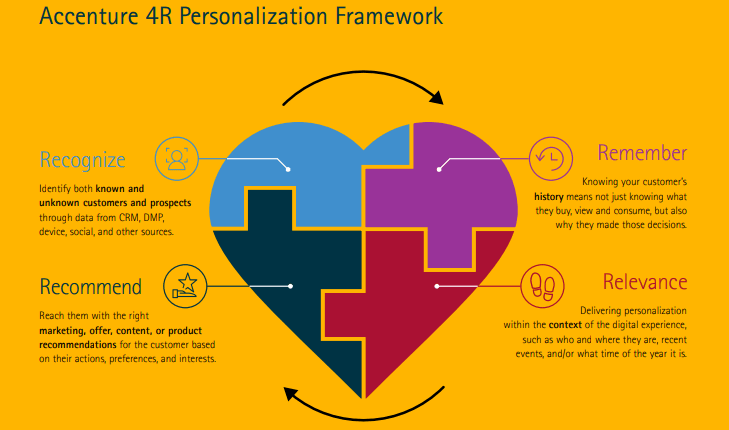
Image Source: Accenture
The framework aims at providing the same offline personalized experience online. Online consumers expect you to know them better than they know themselves. This means using different capabilities and technologies to enable personalization.
Personalization of experiences drives impulse purchases, which in turn, boosts revenue. Forty-nine percent of shoppers buy products they did not intend to after they received a personalized recommendation.
Forty percent of consumers also purchase a more expensive product than originally planned after receiving a personalized experience.
Aligning your upsell efforts to the individual customer shows that you pay attention to their goals and needs. Personalization builds loyalty, which leads to more purchases. Integrate your marketing automation solutions to personalize experiences for customers and improve upsells.
2. Design upsells to solve specific problems a customer could have
Not every customer will need an upsell. You should also not push products or services a customer does not need.
Before choosing to upsell to a customer, always determine what benefits the additional purchases will bring to them. Your focus should be on that customer who has an evident gap in their plan.
Offer options too so that the customer can choose an upgrade that will solve their problem. However, for this to work, you need to make it easy for the customers. Let them make their first purchase first, then offer them extra options after they have clicked buy.
Offering customers too many upsell opportunities even before they make their first purchase will drive (scare) them away. They may not even make the first purchase especially if the upsells are not in any way relevant to them.
If possible, make it so that if the customer decides to take up the upsell after the purchase, they do not need to re-enter their credit card information again.
3. Offer the right price
Before upselling, understand the customer. The right price for an upsell highly depends on the customer and the products. How much are they willing to spend and how much is the upsell worth? The upsell has to provide real value, especially if the customer is on a tight budget.
Since you are upselling to an existing customer, see how much of a discount you can offer to make the upsell appealing while still making a profit. This way, you will be offering customer value while enhancing their loyalty.
4. Promote upsells using milestones
Once the customer has bought your product, they will appreciate an upgrade even more. For example, you can offer upsells if a customer:
Each of these moments means the customer has seen the value of your product. It’s all about finding the perfect time to approach with additional services. Ask yourself, what’s next for the customer?
Thinking about their future is another good and natural opportunity to suggest new ideas and projects you can help them to accomplish. For example, offering the customer the option to upgrade to premium, if they take on more employee or more tasks.
5. Use social proof
Social proof lets customers know that other customers found the product valuable. You can do this by showing:
Amazon offers customers valuable upsells. Customer reviews for each item make the deal even more enticing. Provide the customer with evidence that the big purchase decision will be valuable. That’s where reviews win. Provide data and evidence that assures the customer they will benefit if they take on the upsell.
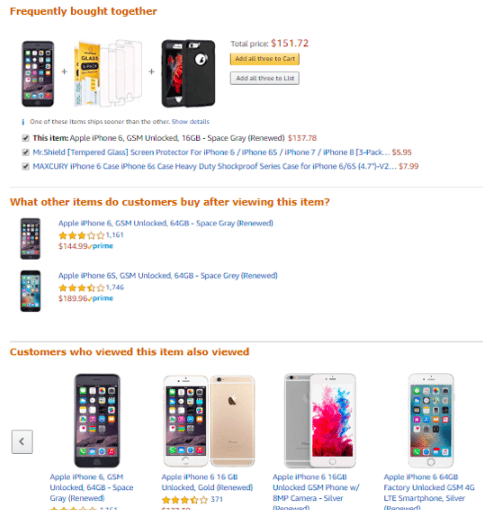
Image Source: Amazon
6. Provide a price breakdown
Show the benefits the customer will receive by buying from you. Provide transparent pricing with a breakdown of your proposal and the cost.
The information will tell the customer what they are getting into, making them more comfortable with the buy. Show them more than one product so that they too can compare prices.
It’s a great way to present an upsell. It makes it easier for the customer to make a choice. For example, you can base comparisons on features so that the customer gets exactly what they are looking for, even if it costs more.
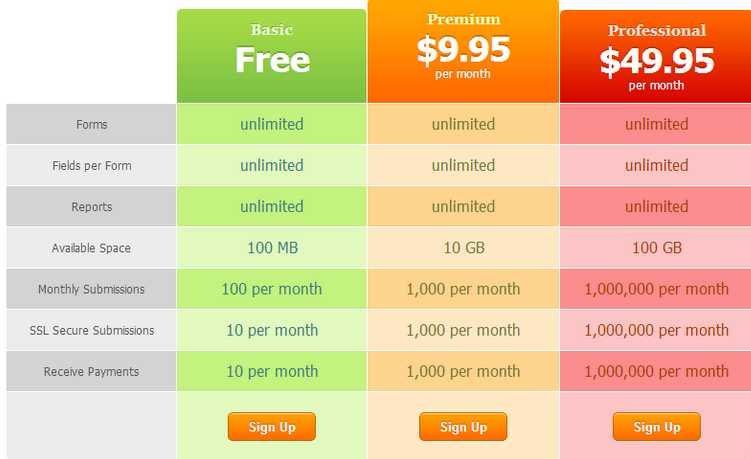
Image Source: stevebizblog
7. Help the customer understand the value you are giving
Once you are ready to upsell, tell the customer exactly what they will enjoy by upgrading. Be specific in order to make it easier to convince them. Show how the product will offer a positive ROI to the customer. What kind of problem will the upsell solve? How will solving this problem improve their lives or business?
Dropbox uses this formula to upsell free customers to Dropbox plus.
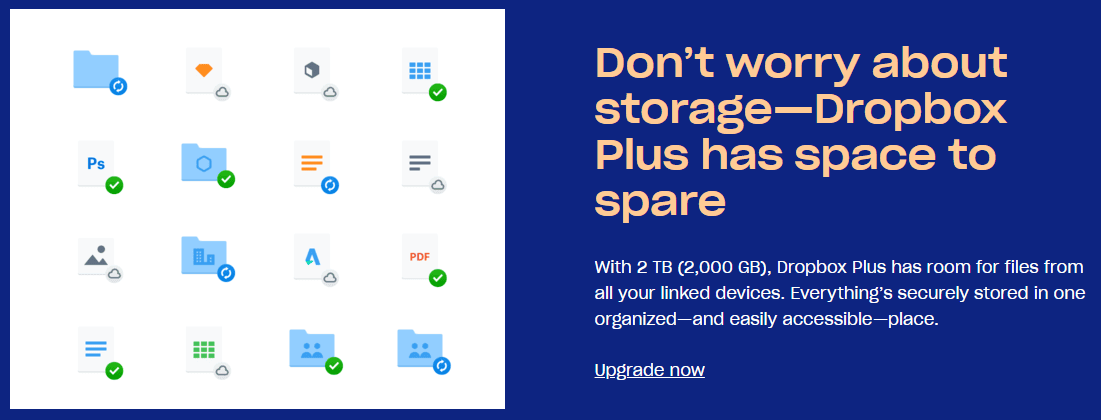
Image Source: Dropbox
The customer needs to know what the additional purchase will do.
Offer upsells that help the customer accomplish relevant tasks. For example, if your website is selling domains, you could offer an upsell that helps get the customer’s website up or shows them how to generate traffic to their website. It’s also about selling benefits to the customer and not features. They will buy if it solves their problem(s).
8. Offer add-ons
For instance, add premium services like faster support, consulting, and personalized training to the customer’s plan.
These add-ons will attract customers and make the buying experience more engaging.
9. Offer upsell bundles
This option combines upselling and cross-selling. Cross-selling is closely related to upselling, but it involves offering the customer an additional product that is different but related to their purchase
For example, if your brand sells physical products, you can create savings for customers by offering bundles. The process ultimately increases purchase value. Make sure the bundles offered are relevant. For example, bundling up add-ons frequently used together.
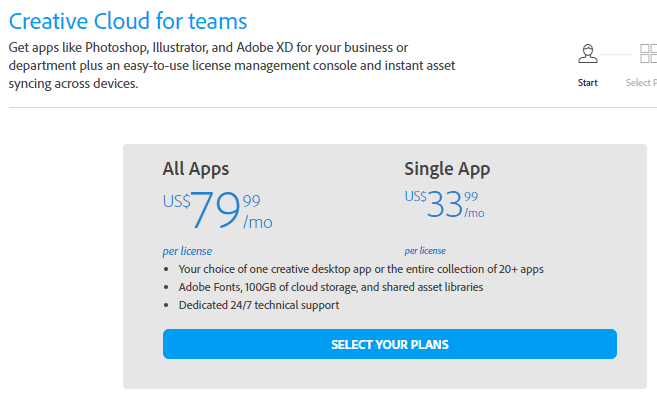
Image Source: Adobe
Adobe offers businesses discounts if they buy more apps. Customers who use their apps are likely to be using more than one. It’s a good deal for the customer so long as the apps are related.
10. Use urgency
Urgency increases product value. Offer the upsell for a limited time or give limited quantities. Including the inventory status, will also create a sense of urgency, driving them to make a quick buying decision.
Combine this with people’s fear of missing out (FOMO). Sixty-nine percent of millennials experience FOMO — the fear of not being in the know and losing social notoriety. The desire to be trendy drives sales. Sixty percent of millennial consumers made purchases within 24 hours after experiencing FOMO.
11. Send follow up emails
If a customer did not buy the upsell product during check out, send them a friendly email afterward, and revisit the offer shared. Do not spam them, though.
The email needs to be relevant to what they were buying and could be a good way to reach out to customers who bought a product and may be interested in a sale you have.
The email should also encourage customers to come back and search for products on your site. It could also be targeted to customers who abandoned their cart. Share the products they have on the cart and add in an upsell as a recommendation.
It could be an incentive like free shipping. Automating your emails helps you segment customers and drive email campaigns aimed at bringing back customers to your store.
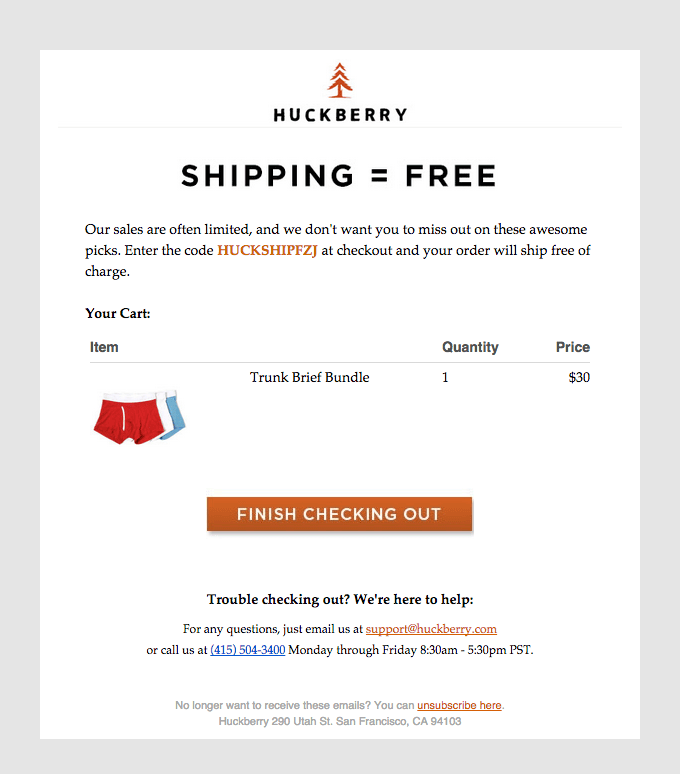
Image Source: Pinpointe Marketing
12. Listen to customer feedback
Feedback and ratings help you improve your product. They ensure you remain up to date with products and services. You can tell which feature customers are not using and why.
Alternatively, what product they no longer want to use. It’s an indication that something is wrong and needs to be changed. Otherwise, you will be offering an upsell that no one wants.
Communicate regularly with your customers through chats, calls, and emails. They can provide useful insights that will help you enhance the product and services you are offering.
Use social listening, too. Customers rant on social media when they are not satisfied with a product or when they want to share some good news about a product.
Forty-six percent of people complain about businesses on social media. When you break this down to generations, 56 percent of millennials have complained about a brand and are quick to take their frustrations online.
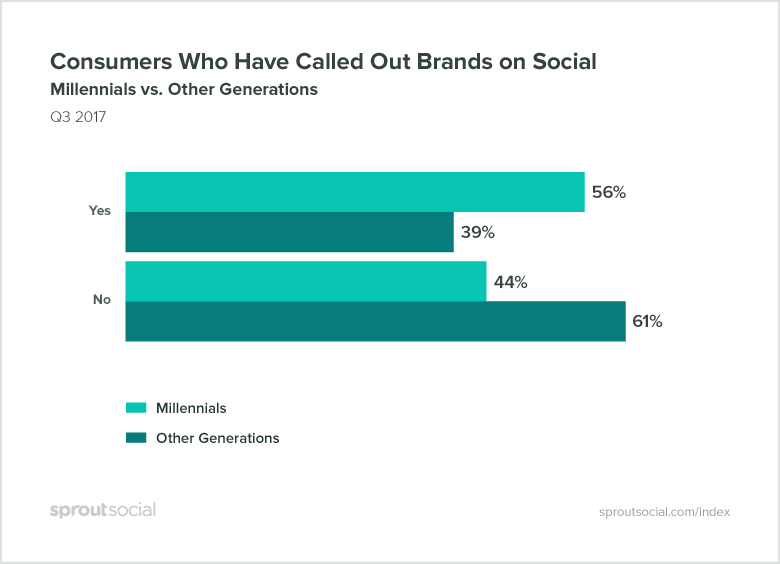
Image source: Sprout Social
What does this mean for your business? That you need to know when the first complaint is posted so that you can respond immediately before all hell breaks loose.
Listen to your competitors too. With this information, you can see what they are doing for their customers and avoid mistakes they may be making. Hopefully, you can win those customers if you approach them as leads and with better offers.
13. Know when not to push
Upselling can turn ugly if you don’t know when to quit. If a customer says no, don’t push the product or service down their throat. Retreat. You can always offer it later at a more appropriate time.
Try spacing out the upsells and stop pitching before the customer gets annoyed and leaves in a huff. It will ensure a healthy relationship with the customer.
Avoid aggressive upselling too. It will upset or irritate your customers.
Driving Business Growth with Upsells
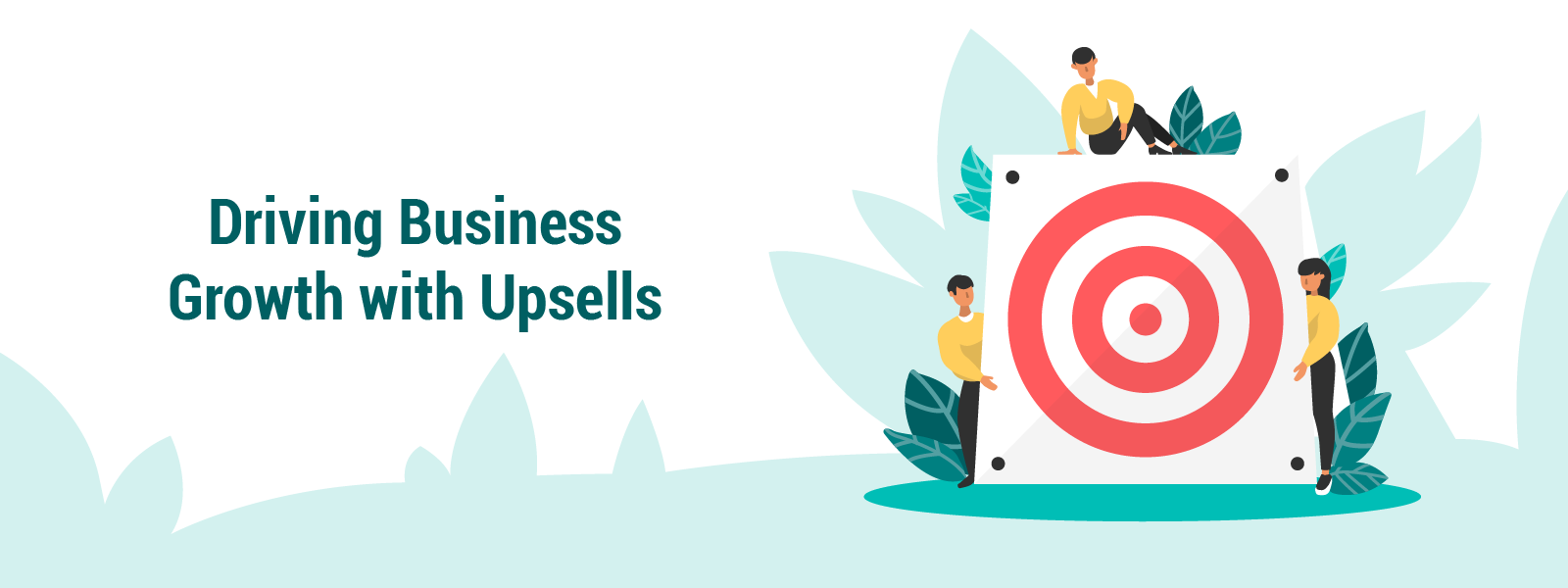
To make the most out of upselling, automate your process. Automating will help you scale and adapt to customer browsing behavior. Automation offers 58 percent more up-selling opportunities.
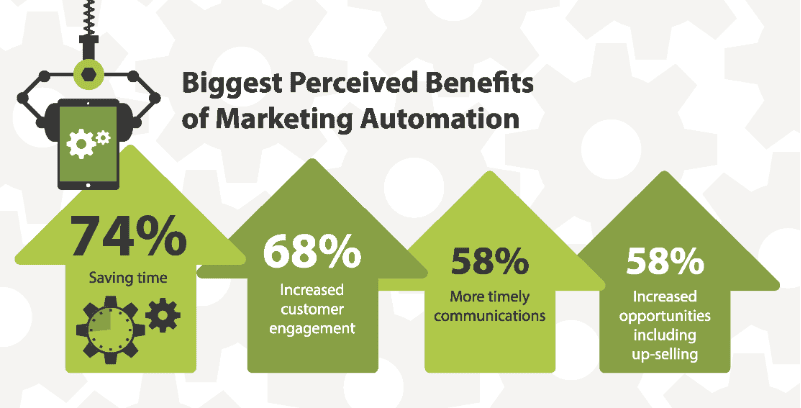
Image Source: Adestra
Personalization and automation will help you understand customers and optimize to provide the best recommendations. They will also provide analytics and future insights to guide your upsell strategies.
Upselling the right way increases brand revenue. Create personalized upsells for your current customers and time them well to fulfill relevant needs.
Relevancy provides value that helps build loyal relationships with customers while creating good impressions. You will make them happy, and in the process, make them successful.
Upselling will also upgrade your business and boost your bottom line but only if done right. It will also turn your customers into brand advocates if they like what they get.
With an upsell, you can experiment with different options depending on the products you offer and the needs of your customers. Segment them and then see how they respond to different upsell strategies.
Based on the response you get, continue introducing the options to other customers and watch your business grow.
Now that you have an idea of what upselling is and why it is important for your business, I am sure you are probably thinking of those missed upsell opportunities, right?
The bottom line is to always ensure that the average value of your customer increases. Increase your customer lifetime value by offering products that elevate their pain problems and help them to grow too.